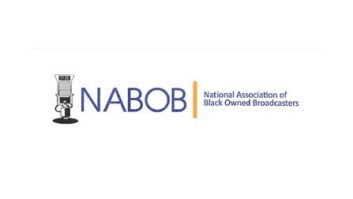BAKERSFIELD, Calif. — The city of Wasco sits at the base of the San Joaquin Valley in south central California, a small community in a relatively flat and dry area of the state. The evidence of dust blowing through the region settles at the tower site of KERN(AM), a 50 kW station serving the Bakersfield metropolitan area.
Bakersfield, the largest city in the region, lies roughly 25 miles to the southeast and is home to the KERN studio. Owned by American General Media (AGM), KERN is tuned to 1180 kHz on the local dial.

The station had long been underperforming due to operation well below its allotted power level. AGM purchased the station in 2005 with the intention of rehabilitating its technical infrastructure, understanding the great potential of its signal strength.
The poor signal quality had much to do with a nearly 20-year-old transmitter that was broadcasting well under the station’s 50 kW allotment. A thorough evaluation period led us to the Harris 3DX-50, a 50 kW solid-state AM transmitter, to help bring the station to full power while improving audio quality and on-air reliability.
New signal
SCMS Inc. served as the supplier, recommending the transmitter for evaluation and assisting the engineering team of myself, the late Elliot Klein and Terry Gaiser on-site during the simple installation.
Once in the building, connections for electrical, RF, audio and remote control were established easily. Plumbing, filtering and NRSC measurements were completed and the station was on the air at full power within the week.
The station has risen to the challenge since turning on the transmitter, often landing at the top of the local ratings due in part to much-improved market coverage. Listeners from as far north as Gilroy and as far south as Long Beach, both about 160 miles away in opposite directions, can receive the signal. There has been a sharp increase in callers for contests and talk shows. Listeners that could barely hear the station clearly or not receive it at all now report strong signal quality and seem appreciative of the improvements.
The transmitter itself is rock-solid. It has lived through many lightning storms and the consistently strong winds that put the San Joaquin Valley dust into motion — without the slightest hiccup.
Simple reporting features on the front-panel GUI show consistent air temperatures and current draw from the PA modules. Internal cooling features keep consistent ambient temperatures even when the building’s HVAC system goes down — critical for reliable operation in this climate.
The GUI is straightforward and simple to comprehend, even ideal for nontechnical personnel checking on the transmitter. Staff is alerted via alarm if tolerance levels are exceeded as defined over the GUI, making for timely responses to potential trouble. The 3DX-50 has interfaced well with our Burk ARC Plus system.
Harris put together a weekly and monthly maintenance plan to ensure the transmitter remains in top condition, and supplied paperwork outlining daily meter reading and reporting figures to monitor. An internal auto-servicing feature — essentially an integrated software package — seems unique to anything I’ve seen on the market. The software generates occasional reports that provide additional data for peace of mind. I have found that the transmitter remains consistent by simply keeping the filters clean. It is very simple to maintain.
The transmitter includes a Harris Dexstar AM exciter with several built-in remote control features that provide data that helps to determine the operating environment of the transmitter. Other equipment connected to the transmission operation includes Kintronic Labs antenna tuning units and phasors and Inovonics modulation monitors. Harris appears to have considered external equipment connections in the transmitter design for enhanced signal monitoring and processing.
Harris and SCMS have been ideal vendors. Harris field technicians respond quickly to inquiries and also review transmitter readings over the phone on a monthly basis. SCMS understood the transmitter the station required to be competitive and stable, and provided excellent customer service throughout the process. The assistance of Elliot Klein, a broadcast engineer for more than 60 years, and local engineer Terry Gaiser was much appreciated prior to and during the installation.
We couldn’t be more pleased with the result.
The author is corporate director of engineering for American General Media, KERN(AM).
For information, contact Brian Clifford at Harris in Ohio at (800) 231-9673 or visit www.broadcast.harris.com












